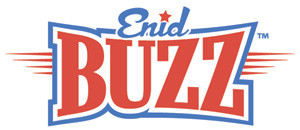ENID, Okla. - June 14 is Flag Day, an annual observance of the Second Continental Congress' official adoption of the stars and stripes in 1777. At the time, they "resolved that the flag of the 13 United States" be represented by 13 alternating red and white stripes and the union by 13 white stars in a blue field.
Flag Day is not a federal holiday but is observed all across the country. The holiday was officially established in 1916 by President Woodrow Wilson, and in 1949 Congress declared June 14 a national holiday.
20 Facts about the American Flag:
1. Pennsylvania is the only state that observes Flag Day as a state holiday.
2. The flag has been changed 27 times. The final star, for Hawaii, was added in 1960.
3. The flag is normally flown from sunrise to sunset.
4. The flag should not be flown at night without a light on it.
5. The first time the flag was flown after being adopted was on Aug. 3, 1777 in Rome, New York.
6. The designer of the American flag was Francis Hopkinson, a signer of the the Declaration of Independence as a delegate from New Jersey.
7. Betsy Ross sewed the first American flag.
8. There are six American flags on the moon. Five are standing, but Neil Armstrong's fell over.
9. The flag should not be flown in the rain or inclement weather.
10. After a tragedy or death, the flag is flown at half staff for 30 days. It's called "half staff" on land ,and "half mast" on a ship.
11. When your flag is old and has seen better days, it is time to retire it. Old flags should be burned or buried.
12. The Flag Code bans the use of the flag as clothing. That’s right, not USA T-Shirts, bandanas or bikinis.
13. If you like to study flags, then you are a Vexillologist!
14. The colors of the flag have meaning. Red stands for hardiness and valor. White symbolizes purity and innocence. Blue represents vigilance, perseverance and justice.
15. An American flag should never touch the floor or the ground.
16. When displayed on a wall or window the blue field should be in the upper left corner.
17. The military folds the flag with 13 folds, each with symbolic meaning.
18. 50 flags fly 24 hours a day around the Washington monument.
19. 95% of U.S. flags are made in the U.S.A.
20. The U.S. flag always flies at the top of a staff above any other flag.







this is really help full
im doing it for school
I’m doing this for school and its really helpful
These are so good facts I will have to show these to my students!!
Re: Point No. 7
Betsy Ross made “ship’s colours” for Pennsylvania’s navy during the Revolutionary War, which included a blue ensign (naval flag) with 13 alternating red-and-white stripes in the ensign’s upper-left-hand corner (canton). After the Revolution, Mrs. Ross made U.S. flags for over 50 years. Her contribution to the American flag was the five-pointed star. Previously, the stars had six or eight points. The famous Betsy Ross story is based on Ross family folklore from 1870 — nearly a century after the Revolution. For more details, see the annotated Wikipedia article on Betsy Ross (as of May 2021). Submitted by Earl P. Williams, Jr., U.S. flag historian (paleovexillologist)
1. According to the U.S. government, there is no proof that Betsy Ross sewed the first Stars and Stripes flag, but she did sew naval flags for Pennsylvania during the Revolutionary War. Furthermore, the so-called “Betsy Ross Flag” dates from the early 1790s — not the Revolutionary War. Lastly, Mrs. Ross made flags for 50 years. (Source: “Our Flag.” Joint Committee on Printing. United States Congress. H. Doc. 100-247. Washington: U.S. Government Printing Office. 1989. p. 2.)
2. Betsy Ross was not associated with her eponymous flag until Charles H. Weisgerber painted “Birth of Our Nation’s Flag” for the Columbian Exposition in Chicago in 1893. Sources:
(A). Furlong, William Rea and Byron McCandless. “So Proudly We Hail: The History of the United States Flag.” Washington: Smithsonian Institution Press. 1981. pp. 116 and 117.
(B) Harker, John Balderston. “Betsy Ross’s Five Pointed Star: Elizabeth Claypoole, Quaker Flag Maker — A Historical Perspective.” Melbourne Beach, FL: Canmore Press. 2005. p. 94. (Note: The author was a direct descendant of Mrs. Ross’.)
3. The latest research on Betsy Ross has been uploaded to https://en.m.wikipedia.org/wiki/Betsy_Ross
Submitted by Earl P. Williams, Jr., U.S. flag historian (paleovexillologist)
Thanks!
Ty this was heelpful